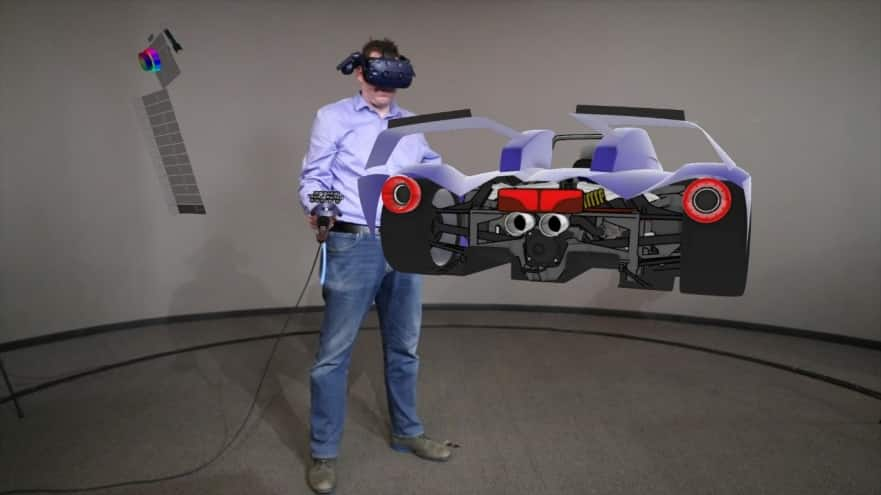Technology is growing at a rapid pace, allowing us to do more with less. Ford is the first automaker to work with Gravity Sketch – a 3D virtual reality tool that enables designers to come up with more human-centric designs.
Ford has developed a new process to put their customers’ needs first and reduces the time it takes to create a vehicle. From Ford Design Studio, a designer enters a virtual room and begins a 3D sketch. He is designing a virtual car around himself and adjusting the attributes to best suit him – the driver.
Designers have traded in their sketch pads for a headset and controllers to become immersed in virtual reality, imitating gestural interactions through motion tracking that replicates sketching with pen and paper.
Michael Smith, Ford design manager, says seeing all angles of a vehicle as it is being drawn truly unleashes creativity and fosters development of human-centric design from start to finish.
“Jumping right into 3D gives us a 360-degree view of a vehicle as it is being created,” he says.

The technology, Gravity Stretch speeds up automotive designs from weeks to hours, by skipping the 2D stage and working with a 3D model from the start. Designers can anchor a driver at the center, rotating their 3D design to view it from any angle to create a scalable vehicle around their driver. They can even step inside the vehicle sketch to quickly adjust design attributes to best suit occupants. Gravity Sketch enables Ford designers to place the customer at the very center of the vehicle as designers are sketching it.
“This application has the potential to help ensure we are delivering the very best vehicle designs for our customers,” said Smith. “It moves the entire process into the world of virtual reality, giving us greater options for reviewing more models in the 3D environment to create the best possible vehicles.”

Five global Ford Design Studios have dozens of interior and exterior designers now experimenting with Gravity Sketch for workflow feasibility and its potential for real-time co-creation and collaboration. Shifting to a model that designs and evaluates in virtual reality could revolutionize the entire process by drastically reducing development time and allowing for more 3D representations in the evaluation stage.
“Our collaboration with Ford designers has enabled us to get immersed in their creative process and discover ways to help fine-tune this application to better suit their needs so they can build the best possible vehicles for their customers,” said Oluwaseyi Sosanya, Gravity Sketch CEO & Co-founder.
That is some Reed Factor news you can us, stay connect with the Reed Factor via Facebook and Twitter for the latest updates in the automotive world.

